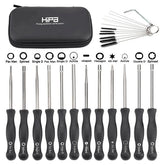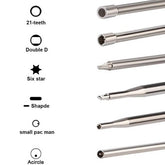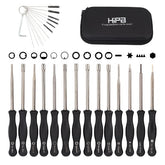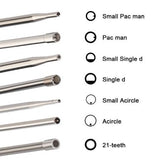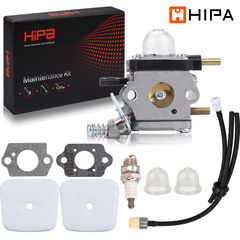How Does A String Trimmer Work?
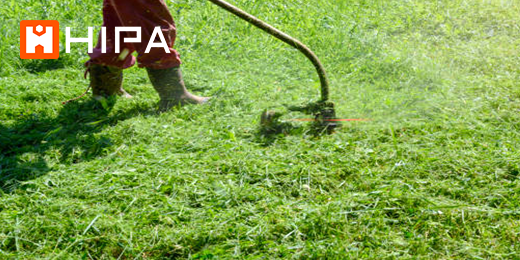
String trimmer won’t start, runs poorly or line won’t feed? This blog has information on how a string trimmer works and offers troubleshooting tips to assist you in diagnosing and repair.
Although string trimmers can differ from model to model, they all operate on similar principles. In this blog, we will address how string trimmer work as well as common problems you may encounter.
Engine
String trimmers can be powered by an extension cord battery or gasoline. Most gasoline powered string trimmers use a two-cycle engine which requires the gasoline to be mixed with oil for the engine to operate properly.
Attempting to run a two-cycle engine without a suitable oil and gas mix will cause the engine to seize. Due to insufficient lubrication, the main benefit of a 2-cycle engine is that it allows for a high output of torque while being relatively lightweight.
Since string trimmers are intended to be handled and operated at different angles, a 2-cycle engine is ideal for this application.
Ignition Switch
To start the engine, the ignition switch must be set to the start position. As the starter rope is pulled, the starter engages the drive cup on the flywheel and rotates the crankshaft. The rotating crankshaft connects to the piston which moves up and down within the cylinder and the ignition process begins.
The flywheel has permanent magnets built into it and as it rotates past the ignition coil, a magnetic field is created. The magnetic field induces electricity, allowing the ignition coil to send voltage to the spark plug. As the piston travels down the cylinder, it exposes an intake port and pumps fuel oil and air into the cylinder. As the piston travels back up the cylinder, a vacuum is created and gas oil and air is drawn through the carburetor into the crank case. When the piston reaches the top of the cylinder, the spark plug ignites the compressed fuel and air mixture which forces the piston back down, exposing an exhaust port where the spent fuel exits . a split second later, the intake port is exposed again, fresh fuel is drawn in and the process is repeated with every revolution of the crankshaft.
Muffler and Spark Arrestor
The exhaust from the engine travels through a muffler and spark arrestor. The muffler reduces engine noise while the arrestor prevents burning carbon deposits from exiting the engine housing and potentially starting a fire.
Choke and Primer Bulb
Engines will have a choke, primer bulb or both to assist with starting, especially when the engine is cold.
The choke will temporarily restrict airflow through the carburetor, so more fuel can enter the cylinder.
Likewise, a primer draws additional fuel through the carburetor which enters the cylinder be for the engine is started.
If the engine starts but loses power or stalls shortly after, the spark arrestor may be clogged, which prevents exhaust from exiting the engine. The clog is often caused by using too much oil or the wrong type of ail in the fuel mixture.
If the engine does not start at all, the most likely cause is a defective spark plug or a restricted carburetor. The carburetor can be cleaned but it often needs to be replaced.
Fuel
Be aware that small engines are designed to use gasoline with no more than 10% ethanol. Gasoline with higher levels of ethanol can be corrosive and attract water which can cause starting or running problems and may damage the fuel system or engine.
You should store the gasoline and oil mixture in a clean sealed plastic container approved for fuel storage. If equipped, close the vent when not in use and store the container away from direct sunlight. If you anticipate storing the fuel for longer than three months, consider adding a fuel stabilizer when you fill the container.
Drive System
The crankshaft of the engine extends out the side of the crank case and connects to a centrifugal clutch. The clutch engages one or more drive shafts that attach to the trimmer head. When the engine runs at idle speed, the clutch prevents the drive shaft from rotating.
When the trigger is pulled, a cable opens the throttle on the carburetor which accelerates the engine. The flywheels extend outward, engaging the drive shaft which rotates the trimmer head. As the trimmer head rotates, the trimmer line spreads out and can be used to cut down weeds, tall grass and light brush along edges and other hard to reach areas.
Trimmer Line
The size and thickness of trimmer line varies from model to model, but the most common diameters for residential use range from 6500 to 9500 of an inch. The trimmer line may be wound in a spool or be small individual strips loaded into the head.
Most trimmers have a bump head that can be tapped on the ground to feed additional line out of the head as the line is worn down.
If too much line extends out of the head, a blade located on the guard will trim the line as the head rotates.
If the trimmer runs out of line, the head can be re-spooned or the entire head can be replaced.
If the head does not rotate when the engine is accelerated, the clutch may have failed or the drive shaft may have stripped out.
If the engine fails to accelerate, the throttle cable may be broken.
Hipa Repair Center has a solution for many of the problems you may be experiencing with your string trimmer. Enter the product’s full model number in our website search engine for a complete of compatible parts. Hipastore.com also has an extensive selection of instructional blogs to assist you covering topics like part replacement. At hipastore.com, we make fixing things easier.
Revive Your Machine With Hipa All-In-One Kit
Please let us know if this works and if you have any suggestions or comments. Or you can join HIPA DIY COMMUNITY to feature your passion for repair projects, share your stories with the Hipa family and get help from Hipa.













